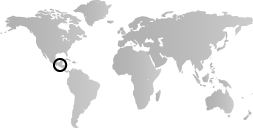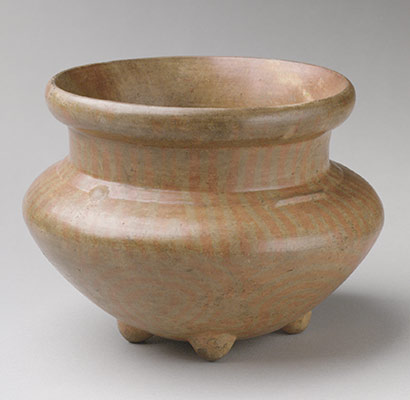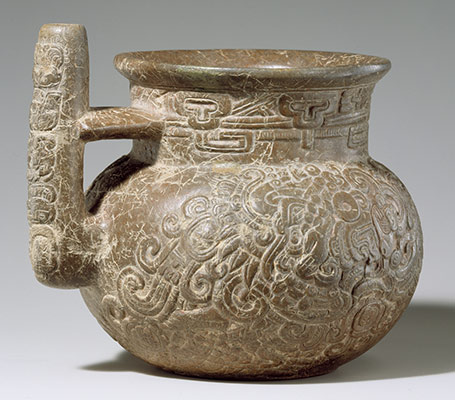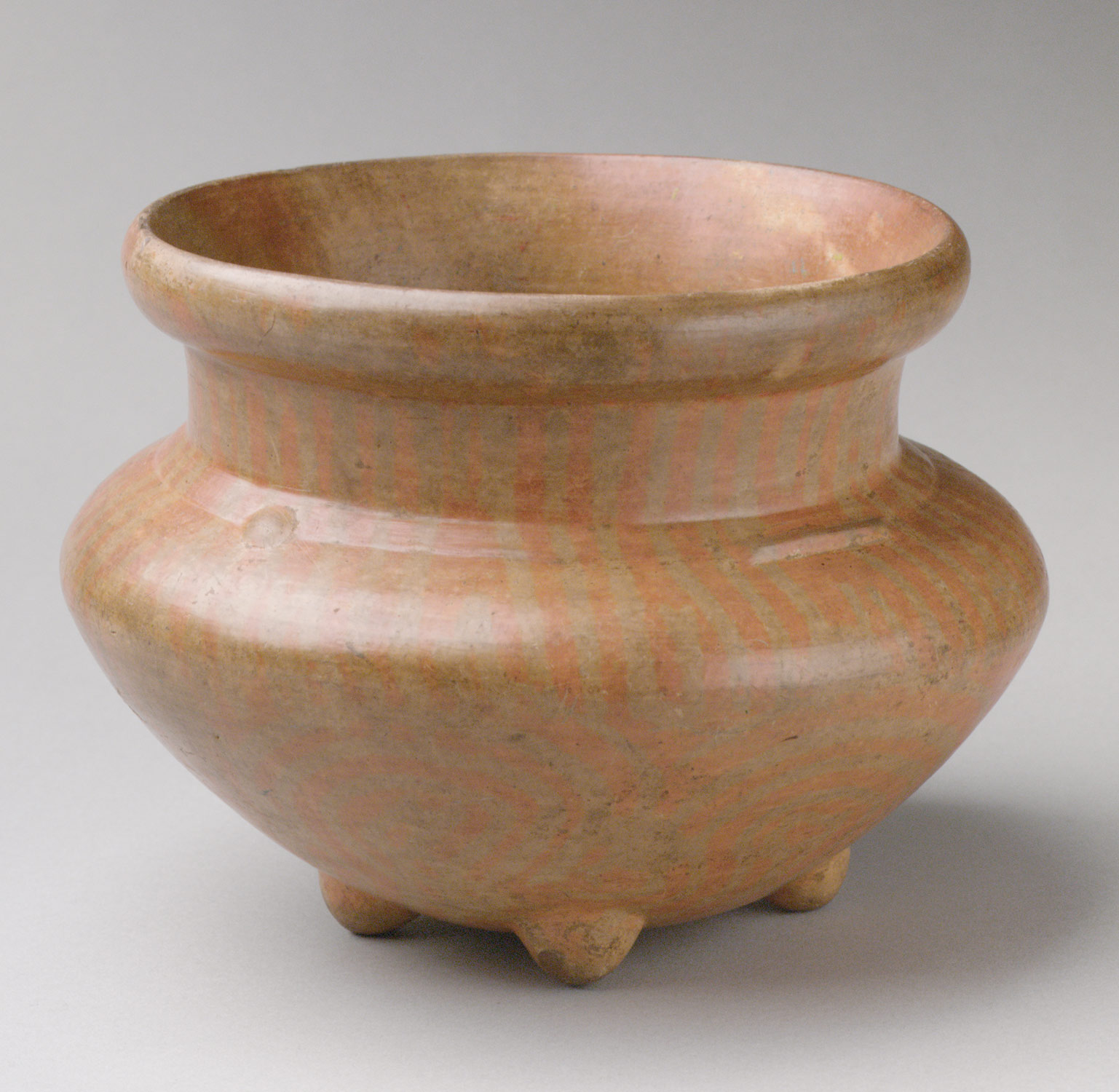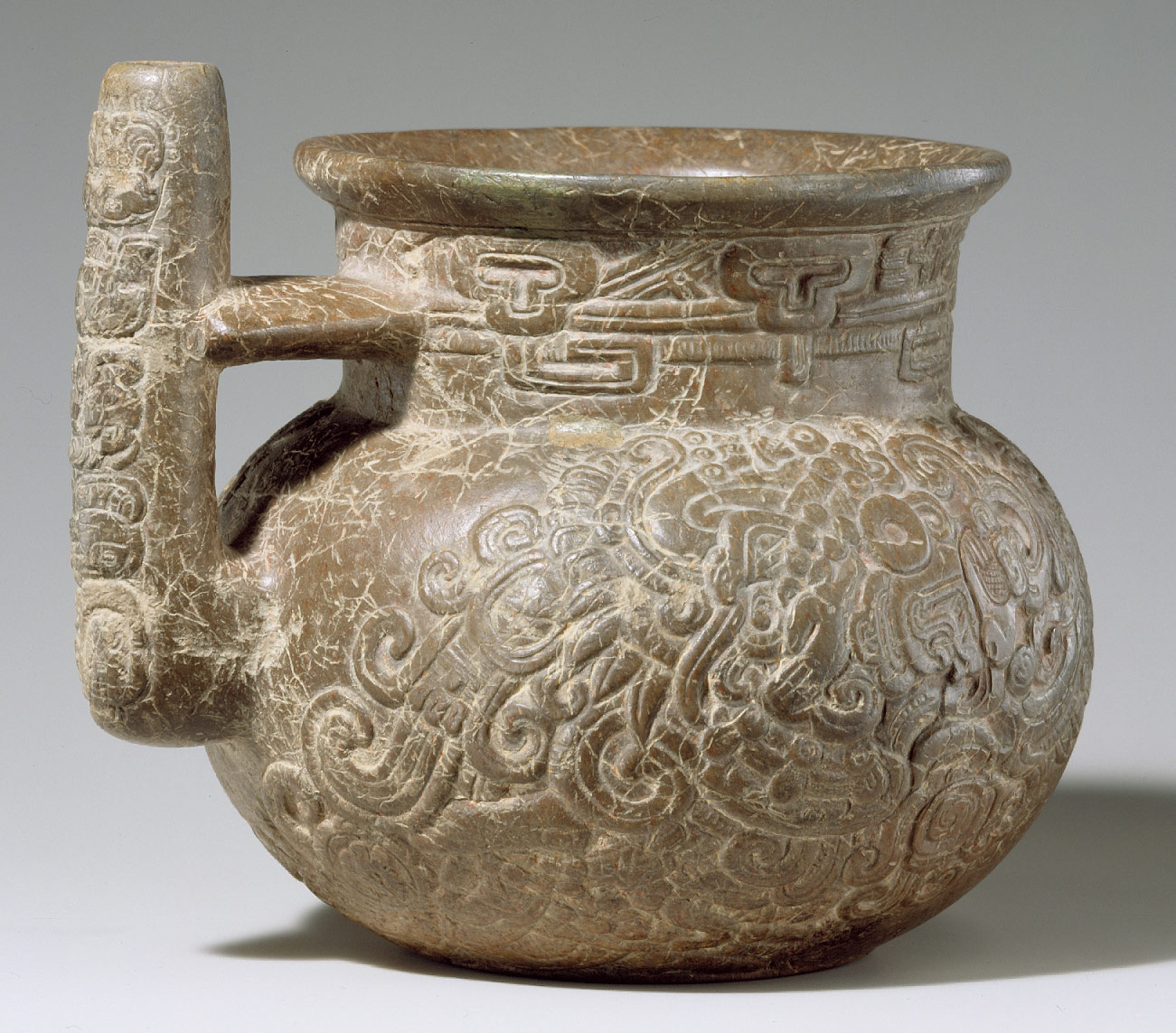Ceremonial centers along the Pacific coast of Guatemala, including Abaj Takalik, Izapa, and Kaminaljuyú, grow in size and stature. Pyramids and monumental stone sculpture at different sites provide evidence for connections with the ancestral Olmec style. In the tropical lowlands of the Petén, the villages of Nak’be and El Mirador emerge as major centers. Hieroglyphic writing appears by the dawn of the first millennium, and the Maya establish the architectural, sculptural, and iconographic systems that dominate their artistic production.
Maya Area, 1000 B.C.–1 A.D.
Timeline
1000 B.C.
750 B.C.
CENTRAL REGION
SOUTHERN REGION
750 B.C.
500 B.C.
CENTRAL REGION
SOUTHERN REGION
500 B.C.
250 B.C.
CENTRAL REGION
SOUTHERN REGION
250 B.C.
1 A.D.
CENTRAL REGION
SOUTHERN REGION
Overview
Key Events
-
ca. 900 B.C.
The beginning of the era known archaeologically as the Middle Preclassic period in the Maya area.
-
ca. 900 B.C.
Public structures, including a large earthen mound, are built at La Blanca, a village in the Soconusco region on the Pacific coast. The mound groups are not centrally organized.
-
ca. 800 B.C.
Public architecture is present in the Pacific piedmont community of Abaj Takalik together with stone sculpture in Olmec style.
-
ca. 800 B.C.
Numerous villages exist in the tropical lowlands of the Petén region of Guatemala, among them Nak’be, El Mirador, and Tikal.
-
ca. 600 B.C.
The community of Nak’be prospers. Public architectural projects are undertaken.
-
ca. 600 B.C.
Ballcourts of an open-ended type are present at three centers on the Grijalva River in Chiapas.
-
ca. 400 B.C.
Located in the fertile Valley of Guatemala in the Maya highlands, the center of Kaminaljuyú becomes important for trade.
-
ca. 400 B.C.
A great building effort is undertaken at Nak’be with the construction of large stone-faced platforms and pyramids. A limestone slab, or stela, with a low-relief sculpture of two dignitaries is apparently placed in association with a stone altar, an early example of an important Maya practice.
-
ca. 300 B.C.
Although Nak’be loses prominence to neighboring El Mirador—to which it is joined by a limestone causeway—it continues to expand its sacred buildings. Enormous stucco-surfaced limestone masks embellish a major temple, the first occurrence of a longlived Maya religious pattern.
-
ca. 200 B.C.
Monumentally scaled public buildings are raised at El Mirador. These include a three-temple complex on a common platform, a much used architectural arrangement in subsequent times.
-
ca. 200 B.C.
Tikal grows larger and construction begins on a great masonry platform located on its highest hill. Base to a number of pyramid temples, the platform and temples will be enlarged many times. Known today as the North Acropolis, it will be the sacred heart of Tikal for centuries.
-
ca. 200 B.C.
Relief sculpture or stelae (as they are known in the Americas) are carved and erected at Izapa in the highlands. They are positioned in association with altars and major architectural features. Rulers and mythic beings are depicted in the sculptures.
-
ca. 100 B.C.
Tombs very rich in sumptuary offerings—including objects of jade, obsidian, mica, pyrite, and quartz crystal—are placed in the interior of temple platforms at Kaminaljuyú. The burials of powerful persons, they include sacrificial attendants.
-
ca. 36 B.C.
A fragment of stela found reused in the Guatemalan highlands at Chiapa de Corzo has the earliest yet identified Long Count date, 7.16.3.2.13 (December 8, 36 B.C.). The Long Count Calendar has a mythic start date that correlates to 3114 B.C. in the Christian calendar.
Citation
“Maya Area, 1000 B.C.–1 A.D.” In Heilbrunn Timeline of Art History. New York: The Metropolitan Museum of Art, 2000–. http://www.metmuseum.org/toah/ht/?period=04®ion=caa (October 2000)
Related
Map
